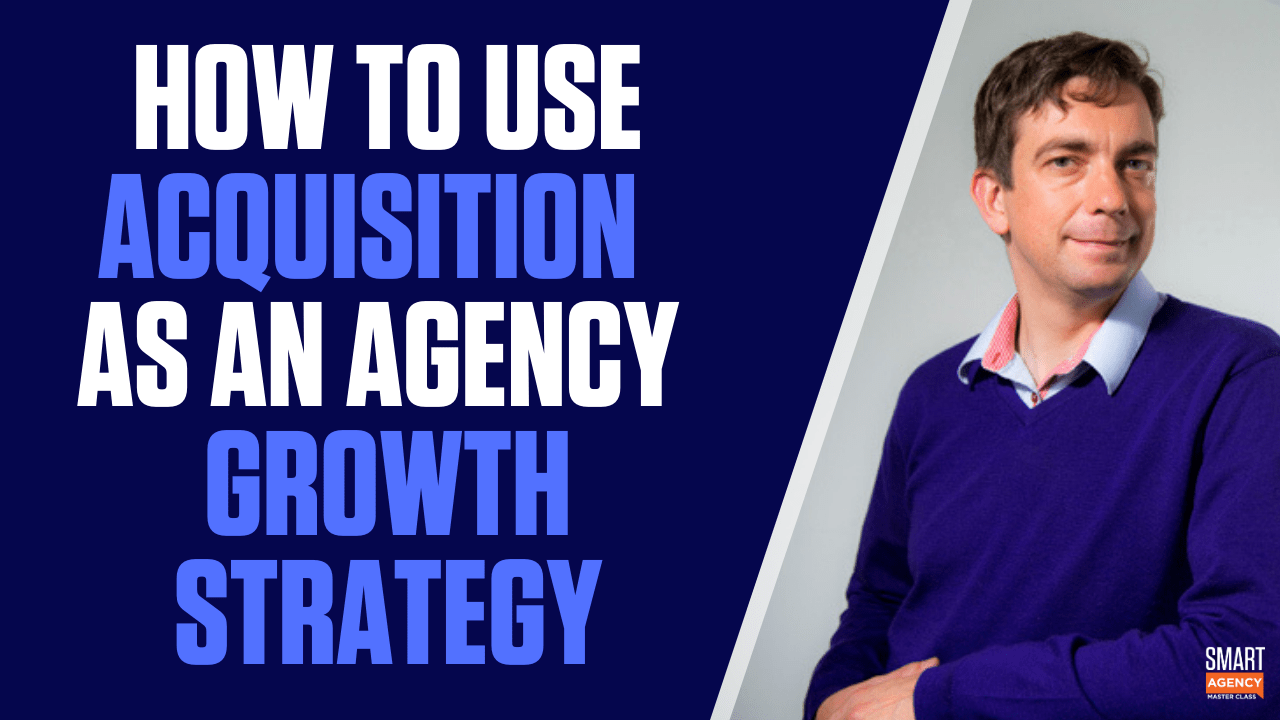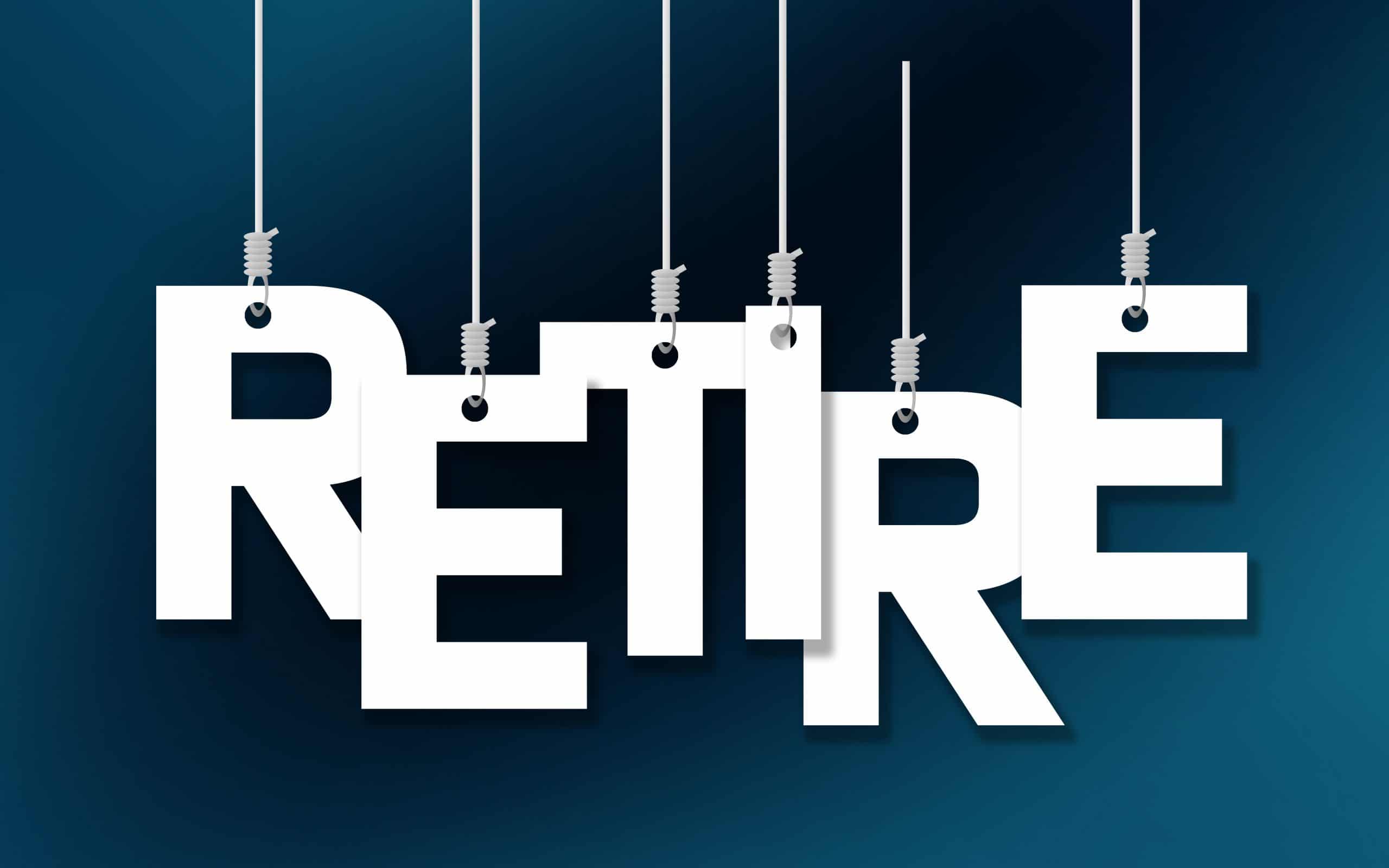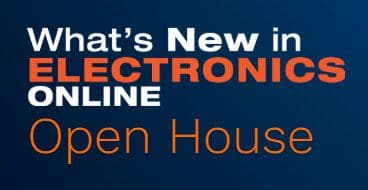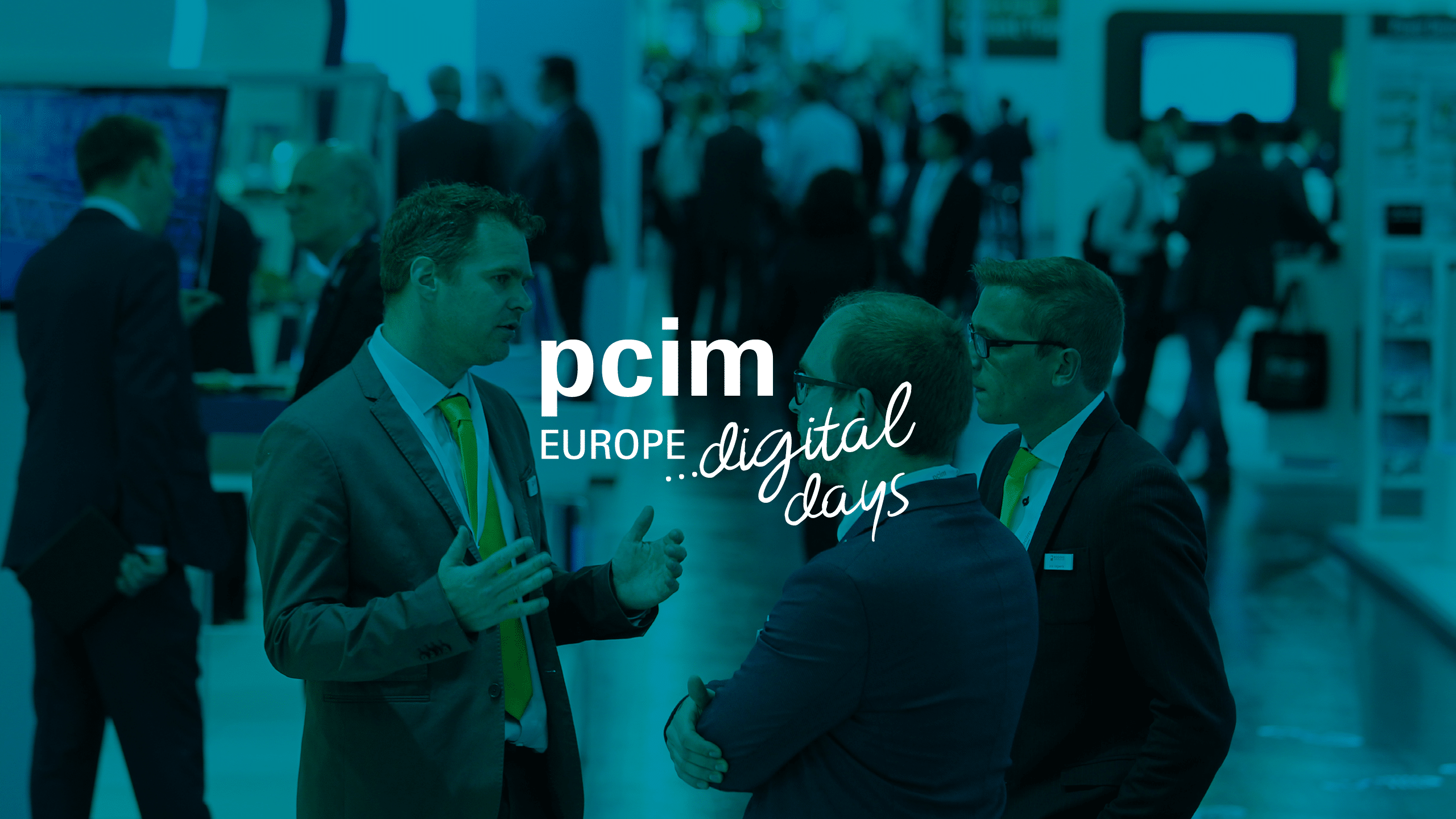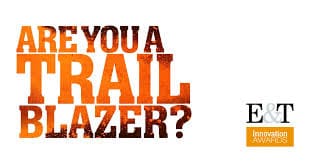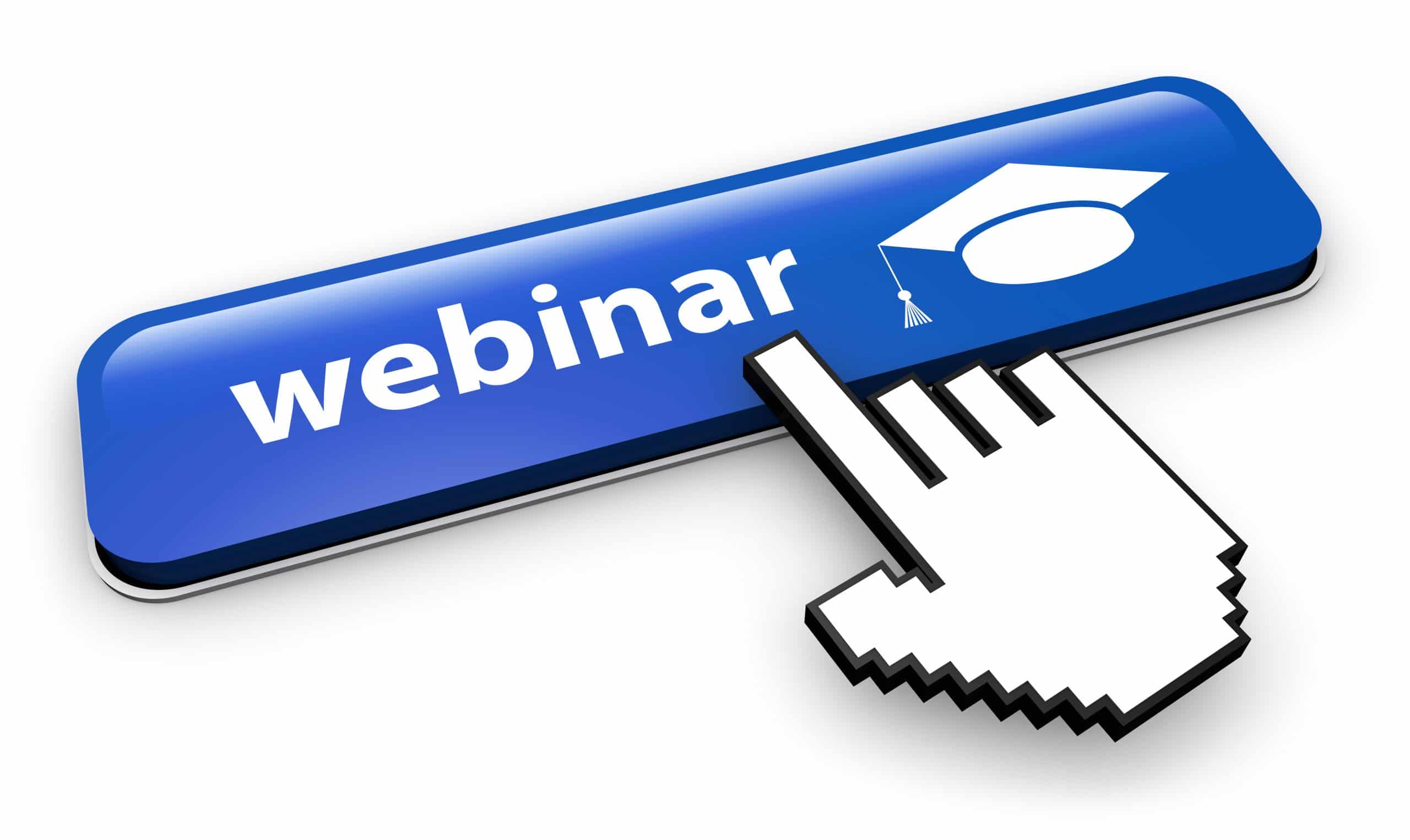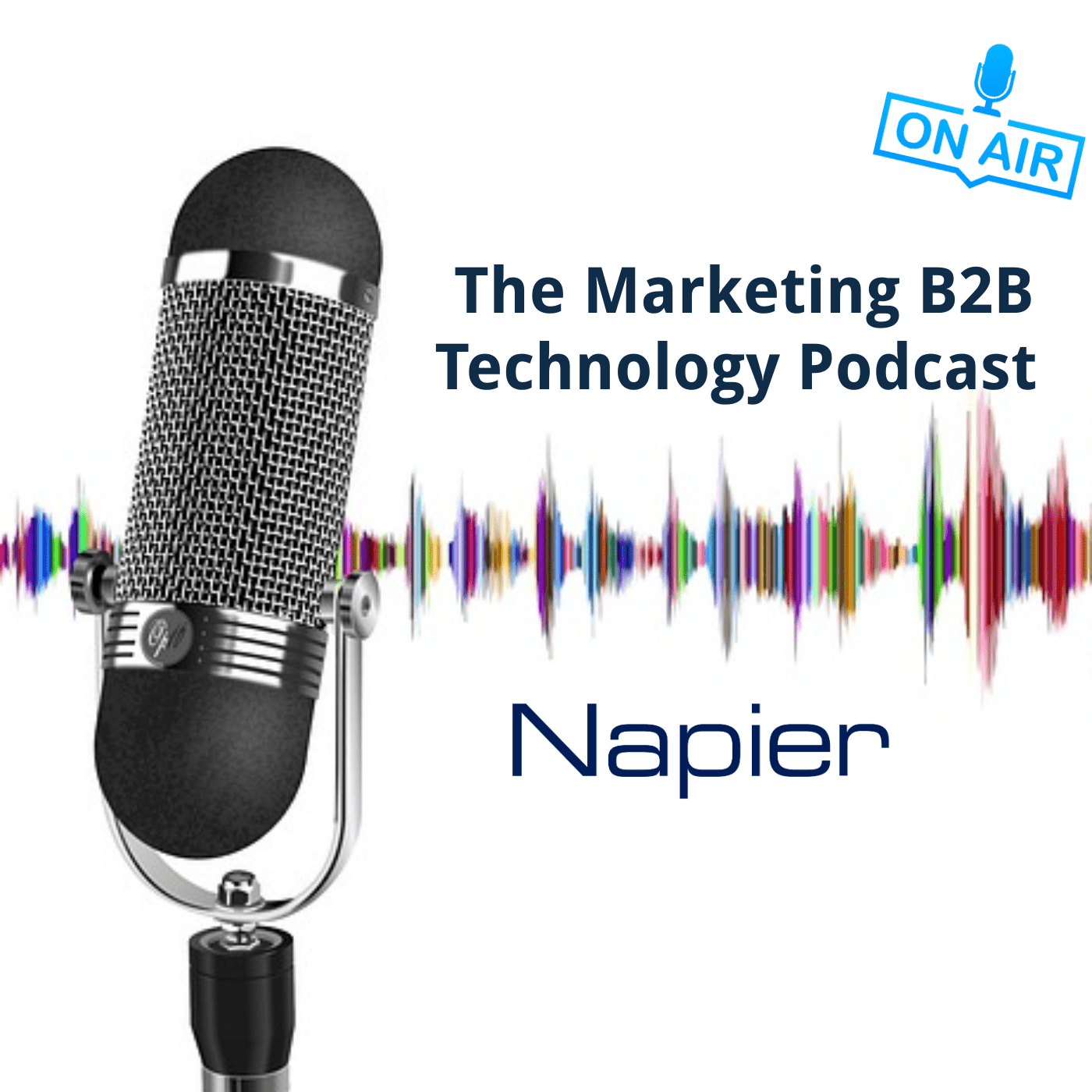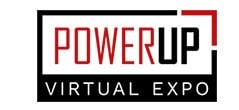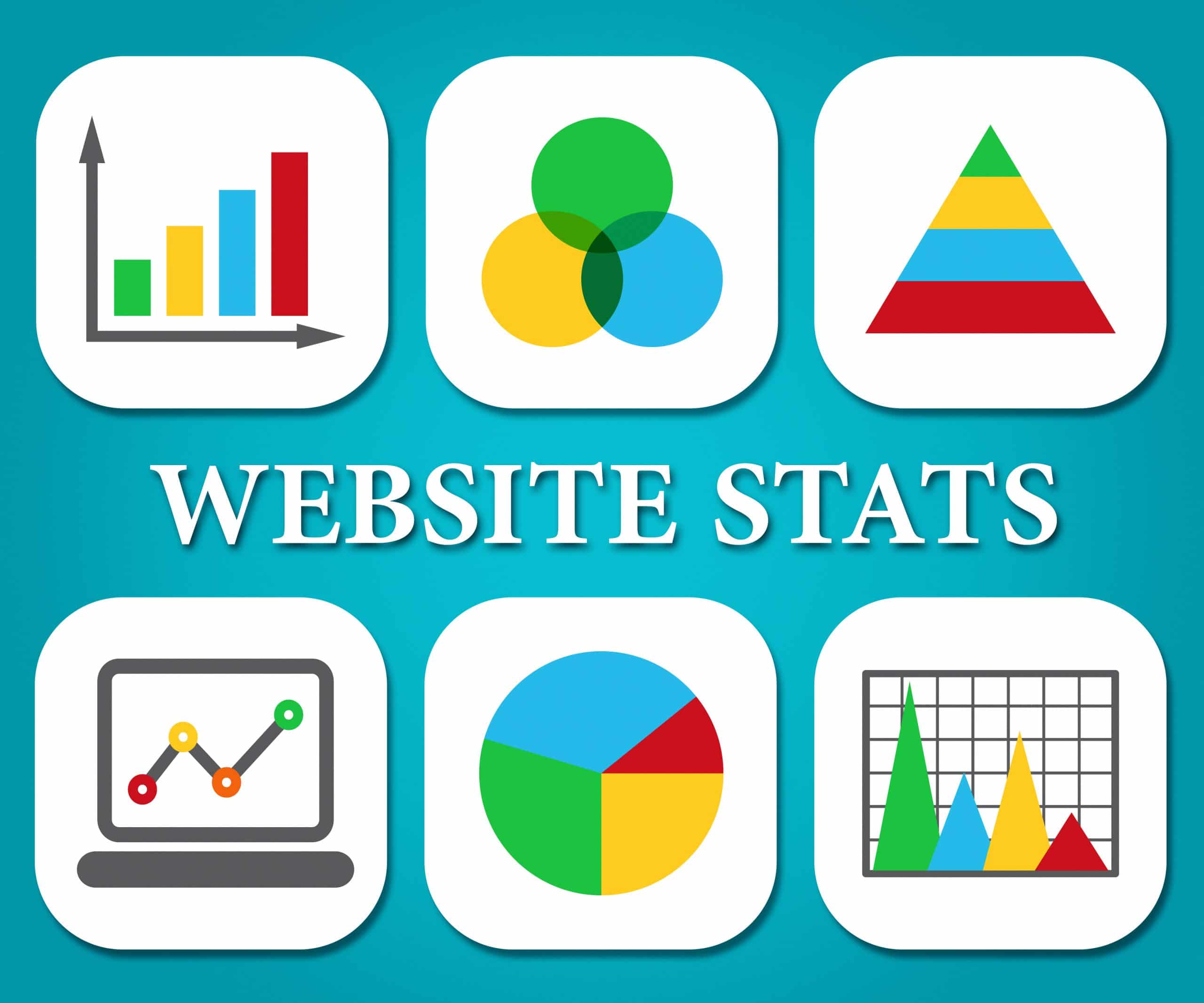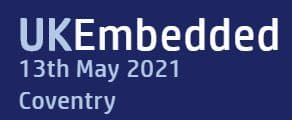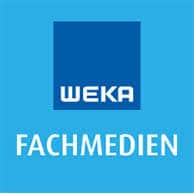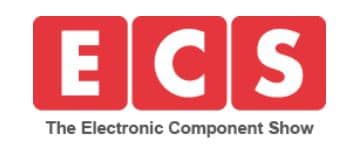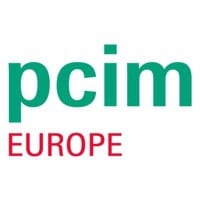Jason Swenk Podcast Interview: How to Use Acquisition as an Agency Growth Strategy
In a recent interview with Jason Swenk, on his Grow your Agency Faster Podcast, Mike, Managing Director at Napier, shares his journey to joining the agency world, and shares some key tips to how you can acquire agencies successfully.
Listen to the full interview here, or via your favourite podcast app, and don’t hesitate to get in touch and let us know your thoughts.
Editor-in-Chief Hans Jaschinski to Retire
We were sad to hear the news that Hans Jaschinski, Editor-in-Chief at elektronik industrie will be retiring after 35 years at the publication.
With two engineering courses in communications engineering and industrial engineering, Hans started his career at Siemens AG in Munich, before moving to the elektronik industrie publication in 1985.
Hans will be handing over his role to Alfred Vollmer, who has been working alongside Hans for the last few years and will now be responsible for the trade publication, with support from the editorial team.
Mike, Managing Director at Napier commented "Hans Jaschinski was one of the great gentlemen of the electronics industry. His expert knowledge and charming manner allowed him to ask great, and sometimes challenging questions to get to the bottom of a story while remaining one of the best-loved electronics journalists in Europe."
We wish Hans all the best for the future, and a happy retirement!
Electronic Specifier Reveals Virtual Trade Show for September
Electronic Specifier has revealed it will be hosting a virtual trade show 'Electronic Specifier Expo' which will showcase the latest products and technology trends from the industry.
Due to take place on September 1st from 9am-6pm, the virtual event will offer attendees the opportunity to hear from a wide range of industry experts who will be sharing the latest products, technologies, and solutions in the industry, as well as contributing to an informative programme of webinars and motivating talks.
The event will include a packed agenda, with a number of halls and webinars focussing on topics such as Industrial, IoT, Automotive, and Healthcare. Attendees will be able to look closely at the featured companies and products exhibited, and will also have the opportunity to view content from specific industries from the last 6 months.
Electronic Specifier is the latest to join a list of publications hosting their own virtual event. With the current COVID-19 pandemic, publications are doing their best to replace trade shows, and we look forward to hearing feedback on what we are sure will be a successful virtual event for Electronic Specifier.
WNIE Launches Open House
What's new in Electronics Online (WNIE) has announced the launch of its 'Open House' platform, introducing a new method for companies to reach key contacts and promote their businesses.
With the current COVID-19 pandemic affecting usual working practices, the industry has had to adapt to a new way of sourcing new products and services; and to meet this need, WNIE has launched WNIE Open House, a virtual platform which showcase's companies expertise or products. With a series of fortnightly virtual showcases, the 'Open House' offers companies the opportunity to share content such as product launches, webinars, technical demonstrations, or technical articles.
Companies can choose when to go ‘live’ within the designated time and the slot is then promoted to the WNIE database via weekly newsletters; daily social media feeds and dedicated e-shots, with the content then hosted on the WNIE website after the showcase date.
WNIE is another great example of the industry adapting to the new current reality, and offering companies digital replacements to the opportunities they have lost in the absence of face to face meetings and trade shows.
For further information on the 'Open House' and how you can take part, please check out the website, or call +44 1428 609 382 to find out more.
PCIM Europe Confirms 'PCIM Europe Digital Days'
Earlier this year, it was confirmed that due to the COVID-19 situation, PCIM Europe would be unable to take place as planned, and would be replaced by a digital alternative.
PCIM Europe has now confirmed that 'The PCIM Europe Digital Days' will be taking place as a virtual event from 7th-8th July 2020. The event will cover the latest innovations and developments in the field of power electronics, with a total of more than 250 video-on-demand presentations and interactive live discussions available free of charge.
Over the two days, the virtual event will offer suppliers and users the opportunity to expand their knowledge and professional network, with an online conference program, featuring presentations from international experts from industry and academia, covering key development trends in power electronics.
Taking part in the 'PCIM Europe Digital Days' is free of charge for users and companies can participate in the form of a digital exhibitor profile, through sponsoring or by providing a presentation on-demand. More than 50 companies have already confirmed their participation, including Infineon, Rohm Semiconductor, Mitsubishi Electric, Varta, and Wolfspeed.
The agenda features three main keynotes including Robert Plikat, Head of Subdepartment Power Electronics at Volkswagen in Germany, who will present 'Trends in Automotive Power Electronics Discussed at Audi's first full Electric Drive Train'; as well as Ahmed Elasser from the GE Global Research Center in the USA who will present 'Battery Energy Storage Systems: Past, Present, and Future', and “Innovative Data Center Power Solutions” by Roland Hümpfner from Huawei Technologies in Germany.
The Industry forum will cover research and development topics such as 'EV/HEV Cost vs. Performance Trade off: A Battle on Multiple Fronts for Power Electronics', whilst the virtual E-Mobility forum offers exclusive insights into the latest product innovations in the field of power electronics for electric mobility.
With the virtual event devised to be interactive, users have the opportunity to ask questions, take part in voting, or join live discussions via video chat. Participants will also be able to contact each other via the matchmaking function of the Talque digital event tool. This is possible both for participants with each other and with speakers and representatives of participating companies.
It's great to see that PCIM Europe will be able to go ahead in the best way possible for 2020. With EETech's 'Industry Tech Days' also due to go ahead in September as a potential replacement to PCIM, virtual events are able to offer attendees the opportunity to learn the latest in the developments of the industry and still network with fellow professionals.
We look forward to hearing feedback from users, on what we are sure will be a successful event for 2020.
For further information on the event and how you can register, please click here.
Electronic Specifier Announces New Podcast Series
Electronic Specifier has announced a new podcast series, 'Electronic Specifier Insights', which provides listeners with a quick but detailed update about the current progress of the electronics industry, in this current COVID-19 climate.
The podcasts cover a wide range of content, including a look into the current technologies shaping the new world, reviews from all the top electronics show, and the latest product releases.
With 8 episodes already live from the series, listeners can access the podcast via all major streaming services, or via their website.
Podcasts are a tactic we have seen several publications start to use since lockdown has begun, and it's great to see Electronic Specifier using their platform to provide updates on different areas within the electronics industry, which will surely be an interesting listen for readers.
New Publication ELETTRONICA-TECH Launched
We were delighted to receive the news of a new publication ELETTRONICA-TECH, which has been launched following the recent acquisition of ELETTRONICA AV, and aims to create a community dedicated to the digital transformation of four pillars: Innovation, Electronics, Communication, and Security.
The ELETTRONICA-TECH website will provide solutions, insights, and updates for electronic designers, system integrators, and general technicians; whilst the community approach will allow readers to interact with the editors directly, and each registered user will be notified every time an article is published on the site.
The website will offer specific marketing automation features, with an 'Active lead generation' and 'Passive lead generation' approach. Both lead generation approaches will score visitors upon registering on the website and will monitor the number of visits, as well as interactions with the articles including comments and reviews.
The 'Active lead generation' approach will include an interactive pop-up that will show after being on a specific page for 30 seconds, asking the reader for further information. The sponsor of the page/article will then receive the qualified lead's details, including name, email, score information, and if they require any further details on the product or company.
In contrast, the 'Passive lead generation' approach will not include a pop-up but will store the activity of registered visitors, and the sponsor will again receive lead information including name, email, and score details based on who clicked on the specific article.
With plans for the magazine to be developed and produced by industry professionals, ELETTRONICA-TECH will work alongside ELETTRONICA AV under publisher FW Communication, to cover the entire market from economic, financial, methodological, and business issues, to thematic insights on technology. This will enable the magazines to reach and assist with the needs of two different target audiences: managers and designers.
We think it's great to see a new publication being launched in these unusual times, with a unique and interesting perspective to provide results via automated lead generation tactics. We look forward to seeing the direction the publication will take moving forward.
WNIE Launches WNIE Radio
What's New in Electronics (WNIE), has launched WNIE Radio, inviting companies to participate in an interview and discuss the latest updates or news in a pre-recorded podcast/radio discussion.
The podcast is promoted via WNIE's website, newsletter and social media channels, and is available on Apple Podcasts, Google Podcasts, and Spotify. The first podcast is already live, featuring an interview with Kaitlyn Dotson, Vice President at CalcuQuote.
At Napier, we think it's great to see WNIE launching its own podcast. With WNIE TV already established, but unable to take place due to COVID restrictions, the launch of their podcast seems to be the perfect replacement, allowing them to continue providing new content to their readers in a safe way. We look forward to listening to future episodes, as the podcast continues to grow.
IET Innovation Awards Now E&T Innovation Awards
The IET Innovation awards has announced its rebrand to the E&T Innovation awards for 2020.
The re-branding stems from IET's award-winning monthly magazine E&T, which covers all areas of engineering and technology through exclusive news, features, analysis, and announcements. The move aims to align the E&T magazine, with the innovation awards, in order to further showcase the fantastic innovations happening around the world.
The deadline for entries is the 3rd of July, and the categories available to enter can be found on its website here.
Good luck to everyone entering, and we look forward to seeing who makes the shortlist when it is announced in September later this year.
Napier's Webinar: Tips, Tricks and Best Practices for LinkedIn
Social media continues to play an increasingly important role in communicating with customers, especially in the current climate of the COVID-19 pandemic. In the B2B industry, LinkedIn is arguably the most vital platform to connect and engage with your audience; yet we often hear marketers ask how do I market successfully on LinkedIn?
Napier recently held a webinar 'Tips, Tricks and Best practices for LinkedIn', which covers what you can do to be successful on the platform. We address:
- How to get results from your LinkedIn profile
- Optimising your company page
- The top 5 tips, tricks and ideas for LinkedIn
Register to view our webinar on demand by clicking here, and don't hesitate to get in touch and let us know if our tips helped you!
Napier Webinar: ‘Tips, Tricks and Best Practices for LinkedIn’ Transcript
Speakers: Mike Maynard
So hi, everyone, and welcome to our second webinar. And I really appreciate you joining us for this LinkedIn tips and trips work webinar. One thing to say is that the chat in the webinar system is open. So if you have any questions or would like any more details, please do place a question in the chat. And what I'll do is I'll address those at the end of the webinar.
Okay, so obviously, with the COVID crisis, and with lots of people at home, there's been quite a lot of attention on social media for reaching audiences in b2b technology. And in reality, though, we've actually seen b2b technology as having huge results and huge benefits from using LinkedIn as a social platform over the past few months. So, it's not a new thing. It's not related to people actually being at home is definitely related to LinkedIn, becoming more of a media platform that brands and companies need to understand in order to get the best reach to their potential customers. So, what are we going to talk about? Well, the first thing we're going to talk about really is something that requires an investment. LinkedIn requires time, and actually, LinkedIn requires a lot of time if you want to be effective. So, it's certainly not free media. However, what we've seen is when people do LinkedIn correctly, then it's definitely worth the effort.
So, this webinar will talk about, you know how you can get results from LinkedIn, with a reasonable amount of time and energy from your site. Within LinkedIn, though, there's two areas that you need to look at. One is your personal LinkedIn profile or indeed personal LinkedIn profiles of executives in your company. And the other is your company page. So this is the page that covers the information about your organisation. So we're going to look at those two areas separately. And then lastly, we're going to look at some ideas really to get you started. So our top five tips, tricks and ideas for LinkedIn, to give you some ideas of what you can do with LinkedIn, and how you can make it more effective for you.
So the first thing to do is to look at getting results from your personal LinkedIn profile or the personal LinkedIn profiles of your executives. Now, LinkedIn is interesting, because it gives you a profile that is absolutely unique to you, and is very much seen as your standard business profile. Obviously, LinkedIn started as fundamentally an online CV service, really focused on recruitment. But today, it's really a huge opportunity to increase your influence in your industry. And perhaps the most important thing to say is that LinkedIn is highly democratic, it's not just a platform for senior execs or specialists. It's a platform that everyone can see success with. So let's look at you know, some other questions. I think most of you are familiar with LinkedIn, and how it works and the ability to post updates and create articles. But the first thing everyone says to me, is, how often should we be posting? And the answer is, there's no good answer, unfortunately. But it's really important to be relevant, rather than being frequent. So our view at Napier is that you should post as often as you've got something useful and interesting and valuable to say. And for different people, that will mean very different posting frequencies. So there certainly is no ideal, or they typically we see people posting, you know, somewhere between a couple of times a week, to every two weeks in the b2b tech industry. And to be honest, if you can't post something interesting, useful, you know, every other week, then perhaps you ought to look at a little bit about what sort of information you're going to share because you need some frequency to keep engagement with your audience. It's really important to understand your approach and we're going to talk about a model we use here at Napier have different personas.
So different types of LinkedIn users that all offer different approaches and different ways to engage on LinkedIn. And there is no best or right way to work with LinkedIn, it very much depends upon you know what your company wants to achieve the goals of your company or your organisation. and the value you can add. And obviously, you know, if you're in marketing, you're probably not going to be posting content that relates to, you know, in-depth issues around developing software, for example, you're going to talk at a higher level, so it's about the value you can add. And also, it's about the audience you're trying to reach and making sure that you reach an audience that is important and influential to your business. But also you reach that audience with content they care about. Now, the interesting thing about LinkedIn is that when you share something, it initially gets shared with your network, and then will get shared with other individuals networks, if they engage with it. So if they like it, or comment on it. And this typically means that a lot of people look at the algorithm and say, well, the more people in my network, the more likely people are engaged, the better it's going to be for me. But actually, as the graph here shows, there really is very little correlation between the number of connections you have on LinkedIn. And the average amount of engagement. This was some research done for an organization called the agency collective, and actually found a slight negative correlation. Although, of course, with agency managers, there tended to be people with very, very large networks of thousands of individuals. But certainly, once you get above 1000, individuals, it certainly seems that there's very little benefit in increasing your network size. And the reason for this is you're then not sharing content with people who really know and care about you. So a smaller network of a few hundred can actually get those early engagements. And this can drive your post to go viral and be much more effective than having a huge network. So a really important takeaway is not to focus on the size of your network, but to focus on the quality.
The other really important thing this is fairly obvious is what you're going to post and this is where we use the personas I mentioned earlier, there are a number of different approaches to posting. And the approach you take will have different impacts in terms of you know how much engagement you might get, but equally, also how much time you have to spend.
So, the first persona we're going to talk about is a PR publisher. This is a persona that simply shares content that looks good from a PR perspective. So quite often news and announcements from their organisation. And sometimes, you know, information about the wider industry in which they work. This is actually a great persona, because it's a relatively low time and low effort approach, because all you're doing is sharing content that may already be available, you can see here. In fact, we've got Petra, who's sharing content that's been published on the Tektronix, Germany company page. So literally just resharing content. And it's easy to dismiss this as just, you know, reshape existing content, but actually, it's incredibly valuable to do. And it's massively underestimated, particularly amongst sales teams. So, when you share content on your company page, and we're talking about this a little bit later, typically, it has a very limited reach. If you can get people within your organization, and particularly the sales teams who've got great contacts and great networks, within customers and prospects, that can massively amplify the impact of content that you're sharing on your company page. So, although the PR publisher is an easy and simple persona to be, it's actually can also be incredibly valuable. Of course, the PR persona isn't really talking about themselves. So, there's lots of different personas that really build you as a brand rather than you as a channel to share information.
So, the first one we talked about is the storyteller. and here we can see someone talking about actually getting rejected from Google for a scholarship. Typically, the storyteller will tell stories that are, you know, either very honest, very brutal, maybe self-deprecating, as this example does, or simply some funny stories to engage people. And quite often, the storytelling approach is also coupled with some sort of clickbait. headline, it's great, it's really interesting. It does require someone who fairly obviously is good at telling stories. So it's not an approach for everyone. But if you're an organization where you can openly talk about, you know, some of the challenges and mistakes that the organization makes, and you'd like writing in the story format, then this is a good persona to engage people, it's highly engaging. People love to hear the honest the truth, the behind the scenes stories.
The next one is the thought leader. And I think in technology, this term thought leader becomes very hackneyed. So, we have a very specific view of what we mean when we talk about thought leaders on LinkedIn. And for us, a thought leader is someone who researches ideas. So, they may be looking at data or run experiments, and they create their own ideas, and their own data that therefore results in an opinion. So you know, quite often these thought leaders, you know, curate some information, and then generate some original content on top of it. And I think, you know, the thought leader is, is a great persona to be, particularly if you're in a fast moving industry, where things are changing all the time. And everybody's interested in the latest research. However, it goes without saying that to generate real thought leadership, on LinkedIn, you've got to generate new insights that other people haven't shared previously. And so that requires a huge amount of work, including basic research to actually generate data that you can share. In some industries, it's a lot easier. So for example, if you run a company that offers an email platform, for example, it's very easy to do research on the length of subject headlines and the open rates. And, you know, really basic data like that. But if you're working in an industry where you're making complex technology that goes into large systems, like many of you guys are, that it's very hard to generate that research, and therefore very hard to generate your own thought leadership. The next persona I'm going to talk about is someone we call a strategist, it's really common in agencies, and actually, is almost non-existent in b2b technology, to the point that when I was looking for an example, I couldn't find an example of someone taking this approach in b2b tech. So I think it's a huge opportunity. But it's also difficult because we are by our natures working in quite a conservative industry. And the strategist basically provides analysis and commentary on what's happening in their industry. So they are continually talking about other brands, what they're doing their products, and providing analysis that helps you understand what these brands are doing and how they're serving the industry. In conservative industries, it's obviously very difficult to talk about your competitors. And I think this is why we almost never see it and b2b technology. In the agency world, it's very, very common, and every agency loves to have a commentary on either another agency's campaign, or indeed what's happening to a brand that they'd like to work with. So it works very well in the agency world, it's very hard to transfer into b2b technology. Although I'd love to see it done one time.
Our next platform is the knowledge share, the knowledge share is actually quite like the PR persona I shared earlier, where we're sharing information. And typically, the differences that knowledge share, is actually sharing news about the industry, rather than sharing news about their organization. So that is the primary difference between the two. But both of these personas are simply curating information. So to gain influence and actually see your posts you know, shared across an industry, if you can share knowledge and information other people don't have. It's an incredibly effective way to actually become an influencer on LinkedIn without spending a huge amount of time generating your own content. So those are the kind of personas we look at.
It's worth also just mentioning the content types, and I did allude them earlier. And fundamentally, there are three sorts of content that you can place on LinkedIn, other than your profile page. And the first is articles, articles, in theory are unlimited. Although various people have run tests and found there are character limits on articles, but basically any sensible length, article about technology can be posted as an article. articles we find have much less engagement and are not favoured by the LinkedIn algorithm, which is very interesting. So LinkedIn tends not to push them, you get a little bit of engagement from them, but not a huge amount. However, articles have a massive advantage in the articles at evergreen content, they'll stay associated with your profile. And because you'd typically write fewer articles, you'll actually see those articles near the top and quite often on your homepage. So we definitely recommend that everyone who wants to build their profile on LinkedIn, generate some articles that they post on the platform.
Most of the content on LinkedIn is post. So that can be links to others content, or indeed links to your own content. You know, obviously, don't be too promotional. If you're just seen as outlets selling, you won't get engagement, you won't build an audience. But you can certainly share content that exists either on your company's website, in the industry media, or perhaps from analysts. And these posts are the main body of what people do on LinkedIn. So pushing posts out is a great way to share information with your audience and build that influence. There is a downside to post is that LinkedIn does tend to prefer content that is on the LinkedIn platform. So certainly when you post, you shouldn't be putting multiple links into the text that you use along with your URL. So just share one URL, don't put multiple links in. When you're posting content through the post system. It's important also to know that video is clearly and without doubt the most effective content today on LinkedIn. So it generates far more engagement than any text based or image based content. I did say there were three sorts of content.
The last thing and something I think that is very important not to forget, is the engagement that you conduct on LinkedIn. So this is the liking the sharing and the commenting. And what we found is that people who are active on LinkedIn, and are engaging with other people's content, as well as promoting their own, are far more effective than people who simply push content out and don't engage with other people's content. So I guess a lot of the audience, perhaps isn't the younger tik tok generation. And one of the things that I certainly heard, as a bit of frustration was when LinkedIn started introducing hashtags. So obviously, everyone likes a good hashtag. It's a great way to summarise what you're doing, for example, trying to hashtag success. But interestingly, on LinkedIn, unlike many other platforms, it appears that you don't need to use hashtags. And this is some research that showed a surprising spike on three hashtags. I suspect that was because people who are good at LinkedIn just tend to try for three rather than three being the magic number. But the second most impactful number of hashtags was zero. So, whilst hashtags are good, it's quite clear as you start stuffing or post full of hashtags, you'll actually see the engagement drop for your posts. So, if you want to use hashtags, absolutely. But I would certainly recommend not using more than three, as a maximum number of hashtags.
The last thing said about content is to be creative. This is something one of our clients has done. And it looks like, you know, a fabulous glossy page, talking about a new technology. In fact, this is their press release. And all this client smart much of technology has done is use a tool to create a much more engaging format. So they've pulled out key quotes from the release. They've got some really striking imagery. And then they've literally just pasted the reason it doesn't look like a press release. It feels much more engaging. And so certainly, I would say if you're looking to link back to content, look at how you can make that content more interesting and more engaging. And something like this approach is absolutely fantastic. I think its incredibly creative approach, and it's something that I think takes about 20 to 30 minutes per release to do to create this layout. So it's very straightforward, and if you want information on how this is done, then please do ask us afterwards.
So just as a summary, I mean, how do you get engagement and obviously, like any other social network, if people aren't liking or sharing your post it, it won't get shared by the network, the level of interest is judged by the interaction. So, um, you need to make sure that people engage with your content. So some fairly obvious things. The first is, you know, be social doing engage with other people, if you engage other people's content, they are much more likely to engage with yours. Secondly, being boring doesn't work. And this goes back to the frequency, be relevant, be interesting, just don't worry about frequency. And don't feel you have to post something and end up posting a boring post, just because you want to fill in a slot, because you need to post twice a week, it just doesn't work. And a really good tip for LinkedIn is to give the inside of you. LinkedIn is a social media platform. It's not a formal means of communication. And lots of your customers and potential customers love to see the inside story. So just draw back a little bit on the formal corporate approach. And give a little more of a fun and interesting view about what it's like to be inside that company. And then lastly, you know, where you can have fun and obviously understand, you know, this is very dependent upon your, your industry. You don't want to be, you know, crazy and fun and wacky, and then try and sell life support systems that isn't going to work. So you need to have fun within the context of what fun will be defined as for your industry not to be the craziest, or the most out there person on LinkedIn.
The second half of our presentation, we're going to talk a little bit about company pages. And company pages, had a bit of a bad rap recently from LinkedIn. Lots of people are feeling that the value of the company page has been diminished because LinkedIn certainly is not promoting company posts, as much as they're promoting posts from individuals. However, we still think company pages are very important not only as a, effectively a directory page that gives an overview of your company, but also the platform on which you can build to get a social presence for your brand or your company. So, the first thing to say is that company pages aren't quite as simple. There are actually two sorts of pages you can create for your company. The first is called a company page is the official page of the company. And it's basically an overview of the whole organization. The second type of page is called a showcase page, and you can create a number of showcase pages that focus maybe on a specific market, or a specific product or group of products. The great thing about this is that you can use the company page to broadcast more general information about your organization, the company's accomplishments, and then you can use the showcase pages to narrow down and focus on specific audiences and deliver tailor messages for people who are interested in specific areas of your business. So this is a very exciting way to get more focused with your LinkedIn activity.
So here's a couple of examples. We've got the Napier company page on the left. And then on the right, we've got a showcase page, where we talk about our content generation activities. And what we do is we post you know, typically slightly different information on the content generation page that we post on the company page. Although we do quite often post content on where they're widely applicable. When you create the company page, and when you create the showcase page, it's really important to make it easy to find and this is a simple, straightforward SEO job. So it's all about using the right keywords that people are going to be searching for when they try and find a company like yours. So very much thinking about what people would type into the search box that you'd like to generate your company as a as a result. And as a tip here we'd certainly recommend you some of these keywords in the tagline that you can put into both the company page and also in your showcase pages.
It's really important to test when you when you use LinkedIn, and certainly you can do this on an individual personal page, but it's much more easy to see what's working on a company page. So you can test things like frequency, the topics of work and the format's very, very easily. So we'd strongly recommend that you test because every audience is different, although as rules of thumb, you know, if you produce content, that's slide based PowerPoint, and you create SlideShare presentations from that, or you create stories around your product or service rather than just talking about the products and service itself. or indeed, video content. And behind the scenes content, which I've mentioned earlier, all of these will perform typically better than average. So it's all about creating content that's gonna perform well.
Now, I mentioned that the company pages aren't emphasized posts on company pages aren't as emphasized as much as they used to be, and LinkedIn is more focused on posts from individuals. This is certainly true, but actually, you can use your team to amplify posts on your company page. And it's incredibly important to expand the reach of your company page, by using employees and particularly sales to share comments and engage with that content. Because whenever they do that, that content then has the opportunity to be shown to their network, as well as the people following your company page. So it's incredibly powerful. I would say you know, it is also incredibly difficult. Most companies struggle to get really good engagement, even from the sales team, I have a lot to gain from sharing content. But if you can make sure that the content you offer is you know, really valuable to customers, and also high quality, that's going to help your team share, as well as giving a good impression of the company to the wider audience.
Company pages have something else that's quite unique. LinkedIn will let you target posts. So this is incredibly useful. If you serve a range of different industries and can't have showcase pages for each industry. Or, for example, you want to post content that's applicable only to one country, or one region. So, you simply need to select the drop down when you create a post and change it from anyone to targeting an audience. And then you can select from any one of these demographics. So you can say that you only want to send this post to people with a marketing job function, for example, or an engineering job function or a purchasing job function. And you can select language. But actually, you know, one of the tips we recommend, rather than selecting language, actually, quite often, it's better to select by location when you're talking about language. So sometimes that can get better targeting than you do through language, because we see some people on LinkedIn defaulting to English where maybe that's not their only language. So that's a really quick updates on, you know, company pages and how to make use of them. And we really believe that there's a big future in company pages, but it does require people in the organisation to amplify the content you're sharing through that company page.
Let's look at you know, finishing the webinar with just a few ideas of how you can improve your LinkedIn presence very easily. So here are a few tips and tricks to help you boost the engagement.
And the first is customization. I mean, please don't underestimate the value of even asking the audience what content they want to see. So, sharing questions on LinkedIn that lets you understand the content that's most likely to generate engagement. And perhaps more effective than asking people their opinions is actually to look at the data. And so absolutely, analytics and data are incredibly important. And do feel free to, you know, either alter or update existing content to make it more topical, more relevant and more interesting. And I would say as well that with LinkedIn, it's really hard sometimes to get data. LinkedIn has very limited API's to allow you to access data. So, it can be quite a manual process to understand what's working and what isn't. But it really is worth the effort.
The next tip is thinking about your company page as a lead generation page, a lot of people who land on your company page will land there through search. So, it's very easy to think of a company page as an about us page. And actually, there's an opportunity to change that and make the page much more a lead gen platform. So thinking about putting offers on the page, you know, making sure you have the complete profile, of course, to increase the likelihood of discoverability. But also think about what a customer would want right at the start their journey, when they find you and perhaps know little about you, what information will they need? And how can you get them to start engaging with the company, and ultimately, generate contact details and drive them to become leads. So really think about the customer journey when you build your company page, and LinkedIn has an interesting feature that we definitely recommend trying, it's possible to put a button on all your forms, this is not forms on LinkedIn, or they can do this on LinkedIn. But this is any form on your website, you can put a button that will auto fill people's details with the information on their LinkedIn profile. It's great because it's a one button fill, and it certainly increases conversion rates on landing pages. However, I would say you must test this, because we found that whilst it can increase completion rates, on the forms and conversion rates on landing pages. And actually, sometimes these autofill forms can generate low quality leads. So when we've tested this as Napier, we've actually found it better to leave the button off. But other people in other industries have absolutely found the autofill button to be incredibly valuable. So we'd certainly recommend, you know, running some tests to see if the autofill button can actually increase your lead generation activity.
I mean, obviously, you want to promote content that builds engagement, not only because engagement is a great indication that people are enjoying and reading your content, but also engagement is what allows amplification of your content. So, it's all about you know, doing something that's a little bit different. So maybe that's a How to post a post with tips in the title, perhaps it's a top 10 list. Perhaps it's a post that builds on some research your organization has done perhaps has infographics or video. Or perhaps it's something fun and different. For those in the audience who are not engineers, but marketers by background, I can assure you asking a D type connector, whether it's dead or not really is very funny to engineers, even though may not be funny to anyone else in the world.
The next tip is to pay for promotion. And we've talked almost entirely about organic LinkedIn in this presentation. But I think that you know, the important thing to remember is that LinkedIn is a business. It's a big business with some of the smartest people in the world working for it., and their job is to make sure that the platform extracts money from other businesses. So, we would absolutely recommend spending money. It's very hard to get traction, particularly organic company posts. But also, LinkedIn is incredibly good at targeting particular audiences very, very accurately, and is probably the best ABM says account-based marketing platform that we're using at the moment in Europe. And quite often with our clients, LinkedIn advertising generates the best return on investment of any advertising. So it is valuable in itself. But it's also important to be part of your mix. If you want to get organic success, so we recommend a mix of payment, and also focus on organic LinkedIn as well.
And then the last tip, and I think I've mentioned this a couple of times, but don't forget, it's social media. It is slightly different from Facebook. We had a client once who said to me, they said, you know, you've got to understand with Facebook marketing, that people go onto Facebook to waste time. And the job of brands on Facebook is to help them waste time. And I think that's great. It is different on LinkedIn. People do go on to LinkedIn because they want to learn, and they want to find out what's happening in their industries. So it is certainly you know, less laid back less fun than Facebook, but it's still social media. And so this is really important to make sure you create a social feeling. So comments on others to actually build an audience of people who want to come in and your content. And also, this is something we see people failing to do. And it is a really big mistake, definitely respond to comments on any of your posts, that is a massive, that generates a massive impact in terms of creating future engagement. So that's our bonus tip, be social, be friendly, and just go out and talk to people on LinkedIn.
So that concludes the presentation, the overview. As I mentioned earlier, if people have any questions, I'd be more than happy to answer them. I just have a look and see if there's any questions that have come through on the chat so far.
Okay, so we have a couple of questions come through. So the first one asks about showcase pages, and whether showcase pages are free to use?
And the answer is yes, showcase a showcase pages are hundred percent free, there is no cost in doing that. So they're incredibly helpful, because they give you a another way to segment your audience. So not only can you segment by choosing an audience when you post, but you can also choose to post a particular showcase page. And it's absolutely free. There's no cost involved.
Another question is whether there's an ideal time to post. And this is something we get asked quite a lot of great question. And I think the answer is quite often, there is an ideal time to post. But it is very dependent upon, you know which industry you're in, and the type of audience you're trying to reach. So I saw a presentation by LinkedIn last year, where they were talking about somewhere between seven and eight in the morning, particularly in the States, as being the ideal time to post to get engagement because people tend to look at their phones, and try and work out, you know what's going on in the world first thing in the morning. Now, of course, this was American research. And it's not that simple to post between seven and eight, because America spans multiple time zones. So it gives you an indication of the challenge of winter post. My recommendation is definitely to, to run some tests. And it's something to be honest, we don't have data on since the COVID crisis hit, and people started working from home. But I suspect that optimum times may be changing as people change their work habits.
Okay, and then the last question I've got is whether the slides and the audio will be available after the event? And the answer is yes, absolutely. We will save the web recording of the webinar. We're recording it now. And it will be available as an on-demand replay.
Okay, I've just seen some more questions come in. So I'm just going to pick another couple that I can answer. Okay, so we have another question about targeting. So being asked whether you can target regular updates, as well as sponsored updates? And the answer is yes, you absolutely can target regular updates. The sponsored update gives you slightly more options in the way you target. But if you have a look when you post on a company page. And just to be clear, you can only target on company page, not on your personal update. And you will have the drop down which lets you select the audience so you can build a custom audience. So that's absolutely possible to target organic posts.
And we have a great question actually about the inside view. So I think maybe I didn't explain this very well. This is something a lot of agencies do very well. And I would say a lot of b2b tech companies don't do at all is provide a view of what it's like inside the company. And so this can range across all sorts of different things. So it's anything that your customers might be interested in. So customers, you know, certainly might be interested in, you know, how you design and develop products and the engineers that do that. They might be interested in the manufacturing, but also they might be interested in things like strategic decisions you make you know, if you choose to launch a product or not launch a product, that sort of thing is is fascinating to your customers. Obviously, you know, you need to be very careful about the sort of information you share. But the more information you can share that kind of gives that, that context about why the company does certain things, and also that the viewers to who's doing it and gives the company a real personality, all of this, you know, really helps to make your customers more engaged and more interested in your organization.
Okay, and now, I think this is the last question. And this is a great question. This is a question on groups. We haven't covered groups, mainly due to time in this webinar. But for those of you don't know, you can form groups within LinkedIn, that allow people to discuss topics. And I think the answer to groups is somewhat like everything else, if you've got the time to create a group and manage a group and ensure that the group is having, you know, high quality engaged discussions, some of the groups are amazing. And the reality is the vast majority of groups in LinkedIn, have either, you know, fallen almost into, you know, complete lack of use, or, you know, really don't have high quality discussions. So if you can build a group on LinkedIn, that has the right people who are prepared to share information, groups are fantastic. And they are an excellent way to, to talk to people who are either customers or potential customers. And particularly if you build a group around a key topic in our industry, that can be a great way to build not only your company's reputation, but also drive sales leads. One thing worth mentioning about groups is, you know, I've said it takes a lot of effort to actually build a group. And you can actually target groups, you know, for example, if you want to target a paid sponsored post, you can actually target that sponsored post to a group that somebody else runs. And this can be incredibly powerful to reach other people's audiences. So it's an interesting approach on sponsored posts, and certainly something worth considering if you're interested in the idea of a group, but you don't have the resources to moderate and manage and maintain that group.
So thanks ever so much for listening. I hope everybody found it useful. Thanks for so many great questions. Really good, insightful questions about LinkedIn. And as I say, we will make this presentation available as a recording, so you'll be able to see the presentation online, download it whenever you want. And if you have any other questions, please do feel free to contact me. You can email me at Mike@napierb2b.com. Thanks very much, and I look forward to talking to you when we do our next webinar.
Entrepreneurs in B2B Sales Podcast Interview: Running a $7M PR and Marketing Agency for B2B Tech Companies
Mike, Managing Director at Napier, recently featured on the Entrepreneurs in B2B Sales podcast. Hosted by Jan Kartusek, Entrepreneurs in B2B Sales is a series of interviews with top B2B sales experts and marketers who share the information you need to succeed in B2B sales.
Listen to the interview here, and discover how Napier helps clients sell highly technical products to technical decision-makers, and Mike's opinion on the effectiveness of customer stories and predictions for marketing technologies in ABM and Automations spheres.
DPA Introduces Essential Suppliers List
Design, Products, and Applications (DPA) has introduced an essential suppliers list, which features companies who have confirmed they are business as usual during the COVID-19 pandemic.
The directory is designed to inform DPA's readers about companies supplying essential components and provide important information that will enable readers to continue their day-to-day operations through these uncertain times.
The supplier's list is free to join, and companies can enquire about being included by contacting andrew.quenault@imlgroup.co.uk.
To view the suppliers' list, please click here.
A Napier Podcast: Interview with Fernando Angulo - SEMRush
In our latest episode, on Napier’s Marketing B2B Technology Podcast, Mike, Managing Director of Napier, interviews Fernando Angulo, Head of Communications at SEMRush who shares how marketing professionals that don't specialise in digital can make use of a tool such as SEMRush to improve their marketing campaigns.
To listen to the interview and to stay up to date when a new episode is live, click one of the below links to subscribe:
- Marketing B2B Technology on Apple Podcasts
- Marketing B2B Technology on Spotify
- Marketing B2B Technology on napierb2b.com
Transcript: Interview with Interview with Fernando Angulo - SEMRush
Speakers: Mike Maynard, Fernando Angulo
Mike: Thanks for listening to marketing b2b tech, the podcast from Napier, where you can find out what really works in b2b marketing today. Today, I've got Fernando Angulo, who is from SEMRush. Hi, Fernando, welcome to the podcast.
Fernando: Hi, thank you for having me here today.
Mike: That's great. So tell me a little bit about SEMRush. You know, your product for SEO and paid search, I believe, can you just give me a bit of a background about what it does? And who you sell the product to?
Fernando: Oh, definitely. So if let me give you let me explain you with an example. So if someone is creating a webpage, and they want to have better results, so to be more visible on the SERPs on the on the results page of Google, they need to do a lot of inside work with their keywords with their topics. So they need to create content. And our platform is giving you all the inside information about what the best content is out there. What is the trending content? What are the best keywords that people who are matching your service and products were looking for similar stuff are searching right now. And of course, what your competitors are doing as well, in your city, country, or with the sample or in the same continents because we are working with more than 140 databases. So if you want to have more online visibility, you should use a tool.
There are different tools out there we are right now one of the tops, because we are not only working with the insights or with the analytics, but also with the with the tracking system that allows you to understand better how your keywords are working, how your online performance is working inside of your niche. And of course, if that's the first perspective, when someone wants to open a or build a webpage, but if it's a company, or if it's a brand, they need to know how well they are performing on their, on their market on their industry. So we have another set of tools that are meant are meant for this company. So we have the traffic analytics tools, we have the market research tools, so they can see how many players are in their niche. So let's say we are in the online streaming platform niche. And you have of course, the leaders of the market their Netflix, HBO, but there are another 4000 players who are working in this industry as well. So if you want to find out, what is your market share, you need to use online tools to do that. So for an A small or a bigger company, you will find the benefits for your online visibility with SEMRush.
Mike: Well, it's interesting. I mean, I was particularly interested, you started off talking about content. I mean, a lot of the SEO tools, vendors start talking about a lot of technology, which many of our listeners, you know, really aren't involved in. So do you see SEMrush as a tool for content creators as much as it is for SEO experts?
Fernando: Oh, yes, actually, we started at the beginning 11 years ago as an SEO platform SEO tool. So that was the classic process. But the industry is changing a lot. And basically, working with Google, especially they have made so many changes on their algorithm. So they're doing all those changes on their algorithms. And all of them will, I will say 95% of them are related to content. So the quality of the content, relevancy of the content, the content is as foreign people needs, the content is the perfect match that people need. So everything is about content with Google. So that's why three years ago, we started developing tools for creating content for analysing continent for its core content as well. And of course, if you want to if you have a request for content creation, we have also a marketplace for content. So basically, yes, we are a content platform.
Mike: Well, so you can actually go to SEMRush and get authors to generate SEO optimised content?
Fernando: That's correct. Yes, we have this market, content marketing platform. So you just need to enter the keywords, we're gonna do the research with the scoring. So we have two scoring. The first one is related to Google, how Google is processing all that information in terms of year, year he, in terms of architecture of the content. And the second scoring is for the people, of course, that is the readability scoring, that is currently measuring, how easy is that content that takes for the user to understand? And how, what is the tone of voice of that content? If it matches with the industry, you are? in the entertainment industry, you don't need to use very formal language, you need to be more casual, or you are in the I don't know education, online education industry you need were much in those parameters as well with the help of machine learning.
Mike: But that's really cool. So you see this as a tool that lots of people within a marketing department could get benefit from?
Fernando: Oh, yes, definitely. If you are in, you know, in digital marketing, I believe that most of the people already heard about us. But if you haven't heard about some us, give it a try, we have a free a free version. So you can just pick up the process that you're working. So basically, when just when you if you want to start using an online platform, or SEMRush, you just need to enter a domain. It can be yours or better if it is the leader of your industry, to see all the insights that you can have from them. So you will, you will know how many keywords they have, how much budget they are spending on ads, how often they are creating ad campaigns, how big is their audience, if their audience is related to yours, and some so many other parameters. So if you want to start from there, that's the very beginning. But if you want to go one step farther, you need to check how to create content based on the information that you have. On your industry. For example, you want to create a piece of content based off of the current situation of the let's say Bitcoin, for a ranking with this topic. Let's say in 2015, you need to you need to write a piece of content with about 800 800 words right now is that that changed a lot because you need to in order to rank for the topic, Bitcoin, you need to have at least 3000 Ward's inside of your URL. So the number of words that you need to use there, the position of the words, all that matters. And of course, with an online platform that's more easy to do.
Mike: Well, so it sounds like today. You know, people who are maybe PR specialists need to think a lot more about SEO. I mean, if I was creating PR content that got fed to the website, what steps would I go through to really, you know, understand how I should optimise it.
Fernando: Well, with that this perspective of a PR person, of course, needs to think about the SEO analysis, the keyword research analysis, but also they need to think about the trends. What is happening now and how people are reacting. What is the behaviour, the user behaviour during any situation or the situation that we are living these days? So for doing that, we have another tool that is called topic research. That is basically the opposite side of keyword research. When you're doing a keyword research, you're, you're looking for metrics such as volume, cost per click. Difficulty how difficult to run that keyword. But when you're looking for trends, you're looking for questions how people are searching exactly what are the most trending topics? When you have a high level topic? Let's say you want to write something about let's return to cryptocurrency, right Bitcoin. So most of the people right now are talking about the stock markets, about their the rise of the price of oil. So everything related to Bitcoin will be in the mouth of the people and they're going to be talking about that. So a PR expert, a PR professional needs to follow those trends in order to create a piece of content that people want to read. So that will be the perfect as much keyword research and then topic research to check how effective that piece of content is going to be.
Mike: So today, I mean, what we should be thinking about is not only how well we rank for a particular search, but whether people are actually doing that search. Is that is that what you're saying?
Fernando: Oh, yes, definitely, actually is not aware. opinion is something that people from Google, were telling us the last three years when they introduced all the quality content algorithms. So they say, if you have relevant content that really matters to your audience, and as words, users, search queries, so you are, you're a good content creator. But just today, the launch this new core update, and they were saying, so everything should be fine with you. But also, you need to have some research behind that content that you're publishing. So I don't know what is the meaning of that research forth. So I believe that if you want to talk about, I don't know, bicycle, a mountain bicycles, you need to put there some additional information about the source of your content inspiration of the source of the where you how you got to this topic. So something related to that. Because it's a recent update. Nobody knows how it works right now. But we are sure that if the content really answers people's needs, that's a good piece of content of content already.
Mike: I think one of the things that you know, a lot of people who are not specialists in in the search world wonder is how to guys like you actually understand what Google is doing. Because, as you say, they've introduced a new algorithm. They've been a little bit vague about it, how do you work out? You know, what's your customer should be doing to make sure they rank towards the top with that content?
Fernando: Oh, yes. Well, first of all, it's because we are kind of obsessed with marketing. And all the time, we are just hearing the alerts from our online platform selling, this is new, this is a new type of change in the first page of results. This is a new type of new type of snippet. And we are having a lot of conversations on Twitter, and inside of communities. So how do we know this about these changes, because most of them all know, just a few of them are official. Most of them are not official. And we're just trying to figure it out how they change things. But for example, with the with the beginning of usage of voice, devices, voice assist assistance, I mean, the Google Home, Khomeini and then the nest, with the beginning of their incorporation to people's lives, we saw that most of the changes in Google have has increased in terms of, there are a lot of answers to questions, there are a lot of snippets that are really, really big. So in terms of advertisement, when you see a Google out there, you see they're just a tree, one phrase, the URL, and the and the message from that. So it's very clear. But for the feature snippets, for example, if you type on Google, how to boil an egg, or how to open a bank account, or restaurant near me, you will receive beautiful results there that Google is creating specific, specifically for each industry.
So if you are in the real estate, industry, or in the insurance, or banking, or financial, FinTech, whatever the industry's goal is prepared really interesting results for all of them. Why? Because they want to have more and more users staying and engage engaging with those results. So just an example. I do this, in every single conference that I participate. If you type on Google, how to open a bank account you will receive at the beginning. A list of steps from a bank usually is the central bank of the country or is the most important or is the most important insurance company. If you don't have that type of result. That means that first the banks in your in your city or in your country are not doing a good job and you don't have competition. They're in between With bandwidth, which is crazy. But if you have a beautiful result, that's the feature is neighbored, you will understand because there you can see the logo of the bank, the image of the bank, the story of the bank, the knowledge graph, you will see the step by step process how to open a bank account. So basically, for right now in the United States, there are about 80 85% of questions that they are ready to receive featured snippet. So Google was going to that direction till this year. They were changing their status from search and giant to the answer in giant, right, now they are going to another direction, and then they made it officially last year, when they say that, okay, we, we want to go from the aspirin giant to the get it getting fixed done. And john, so they want to apply more, actually more, they activate More Actions inside of their search engine. And that's basically the things that you can do with your voice assistant, which is an incredible thing for for the future of digital marketing, of course.
Mike: So with Google changing, you know, to rather mean search to being an answer engine, and then getting things done engine. How does that change what content people need to create presuming that that has quite a big impact?
Fernando: Oh, yes. Well, when you are creating a piece of content, you need to be sure that all the question keywords that are out there, related to your product or service are answered, for example, first, first question that you need to have when you're creating a content that is meant to be for answering people question is, of course it, what is the name of your brand? Then where is and of course, if you have a specific location as the name of your brand, and the last one will be will be how to use and then your products. So you need to check if we those three questions, the content that you're producing. As a result, it matched a feature snippet, because those features are free to earn. But you need to have the right format for all of them for the question or keyword. What is, for example, what is SEMrush? Right, we have this feature snippet. And in order to be in that featured snippet, you need to use a certain amount of words, which is basically 46 words 156 characters. So you need to have what is SEMrush. And after that hare, you need to use the 146 56 characters. explaining why does SEMrush only with that amount of words with the with the next one. Where is it basically, your address phone number. And having activated the location mark, of course with the address if you can have that that as well. And for the how to use this case how to use your service or your product, or in my case how to use SEMRush, you need to have at least with a minimum of eight items. So eight steps, how to use assembler. So step one, you need to open your browser, step two, you need to enter whatever whatever are the steps for this process. So if you have those three is with a featured snippet, you have already won something really interesting, first of all those features snippet. And second is the voice search result. Because when you have a feature snippet, you also have a voice search result. So if you are using any device with any Android device, actually Siri is using some of Google's data as well.
You will have two type of results. First one is going to be the results on the first page. The second one is the result on a voice search device. So start resolving questions related to your own business. Second step there will be this one is going to be is going to be creating content that people from your industry. People from your niche are asking to similar business as yours. For example, you know, I believe every single business owner, they have the least of the most common as worded questions. So that is a good piece of content to create even better content to receive several features, snippets, or people or other people on people also crystals, which is another great type of result that Google is software. So if you can create based on those pieces of content as frequently asked questions, you can have really, really understandable piece of content that Google is going to reward you with featured snippets.
Mike: That's fascinating. It's it seems like, you know, now you're talking about SEO, from the point of view of what customers are going to ask rather than looking for high volume keywords it has SEO changed in that way?
Fernando: Oh, yes, definitely. And, and a lot, actually, when I was in India, at the beginning of this year, I saw that many financial institutions there, they were just creating awareness through these features, snippets. So their main objective was not to get traffic to their website. So they were not taking a look into the ranks were the first second position, but they were working a lot in terms of brand awareness, having an earning working for earning featured snippets. So if you have already that resolved, place on the first page of Google, actually, some people, some specialists called that so the zero result is the zero position, or the ranking zero, because that is not the first that's not the second that this zero, and then you have the organic results. So most of them are working to having that result created just the format. So as I mentioned, the paragraph with 156 characters, or 46 words, they eight items in the list. Actually, I saw some banks working only with lists, so they have around four for one bank so that they had more than 5000 features, neighbours, because they were implementing that change that Google offered for basically everyone the last during the last three years.
Mike: That's that that's really interesting. I mean, that that's absolutely very different to just trying to rank top for high volume keywords. And just to move on a bit, I mean, SEMRush offers a lot of features. So as well as SEO support, you also support paid search. So AdWords, I guess people are still calling it. And from your point of view, when should people use paid instead of trying to use search engine optimization to get to the top?
Fernando: Well, I will say, as a person who creates a different ad campaigns, for different industry, it depends on the needs, that you're that you're looking, for example, in time of crisis, I believe that more most of the people that are desperate to get more closer deals, so they want to have more leads to sell. And of course, if you are not in that situation, and you can you have some budget, you can allocate some of the budget that you have for expanding more in terms of organic search, which needs more time to have results. So I will say it depends on the situation that you are for the first type of people that are in the crisis situation, they don't have that they really need to have more leads, of course, this is the same strategy going for ads, so creating ads, no matter if it's Google of their social ads, they need to have I will say and especially is working well with that because you can burn a lot of money, this situation people are trying to do it themselves. And they need of course, to categorise the audience, they need to launch at the very specific timing with the very specific timing, they need to have a certain type of knowledge I will say I will say a high level of knowledge in order to not burn a lot of money. But if you are in the second position that you have some free budget some well some provide you to growth I will go 100% to search to trust you. Why is that because when this situation with the with the virus started, I remember many companies that they were doing only ads saying that Oh my God, we should invest more on SEO for this for this situation because they were cut cutting the ads budgets because they couldn't open the doors, so they cannot engage with the people. And if you have an SEO strategy, so people are just gonna be coming to your website, organically, so you don't need to invest that. So it's like your, your, your magazine, your office is still open, but you're not paying for visitor, so you're still receiving that traffic. So, again, it depends on the situation.
Mike: It sounds like you're saying, you know what one of the benefits of paying for traffic, or paying for ads is that you can turn them on, and they start having an impact straightaway. Whereas it takes time to build up the SEO. But on the other side, obviously, when you turn the ads off, the impact disappears immediately. Whereas SEO has a much longer-term effect. Is that, have I understood that right? Absolutely.
Fernando: Yes, that's a way you are, you're investing on really fast and quick results, or you're investing on long term long term. So both of them are of course, acceptable, but long term, it will affect you in a lot during the long term, of course.
Mike: And then I hear some people talking about paying for ads, because they don't feel they can get to the top of a particular search page. I mean, for example, it could be something where a lot of you know, publications and Wikipedia, because more generic term. Or it could even be competitors. brands that they want to rank on when they buy ads, is that a good strategy?
Fernando: Well, actually, when you are skipping, doing the research, for the SEO keywords, such as the ones who are who has the highest Keyword Difficulty, let's say 9596, the Keyword Difficulty goes from one to 100. So 995 98, like impossible to, to rank for. So for those specific queries, you need to go. And this is my suggestion here, you need to go for the longtail keyword, which are basically made from questions. I will go for different variation of questions and related searches. But definitely with different variations of questions, you can go higher than expected. Actually, there are a lot of longtail keywords that are higher for some general questions for some general queries. And in the case that you want to have more online visibility, you can have, of course your budget allocated for us, but it's a better tactic to have that result on people also asked or on a feature snippet. And I really love this kind of results. Let me explain you why. Firstly, there are two type of results. The first one is the featured snippet and then the people twice, which are related questions, right. So for the first one, in order to rank for for a featured snippet, you need to rank at least in the top 10 with the top think keywords. So in the first page of Google, which is also really difficult, but with the second result, that are always together with a feature snippet, so you have the feature snippet. And below that result you have the people also ask, which are also in the first place are also SERP feature, which is that position zero, in order to rank for people also ask, you don't need to be in the first page of Google, in the second page of Google are not even in the 10th page of Google. So you need just to have the right format to be there. So you can have rank, very easy, very easy. Wikipedia, having the password for that search query. And earning that people also are people also as a result, that's something that it goes really fast when Google is sending in indexing The result is it can take from one to three hours to have that result, which is pretty much amazing.
Mike: Well, I mean, you've listed a whole load of interesting, you know, tips and tricks throughout this into how do people get up to speed on SEO, particularly if they're not, you know, 100% focused on that market perhaps or in content generation SEMRush offer any training or any other information?
Fernando: Yes, actually, online education is one of our major goals during the last couple of couple of years, and we created an academy related not only for under the best the better understanding of our product or services, but for a better understanding about general digital processes and strategy. So we have the SEO, fundamental courses, we have the technical courses in our academy, which is semrush.com/academy. And all of them are free for everybody, you don't need to have a paid account on SEMRush to use it. And of course, we are offering certifications as well that you can include on your LinkedIn profiles, and the teachers that the professors that are there are industry professionals with high level of recognition.
Mike: Brilliant. And if people are interested to actually, you know, try the tour, I think you mentioned there's a free version. How would people try SEMRush? And then what would it cost if they want to make use of all the features?
Fernando: Sure, when, when you start opening the domain, similar to the clone, you will see there are a search bar, usually you do on Google, you can start from there. And you will have the free version, which is basically 10 search queries, and 1010 queries that you can do with different domains. But if you want to go in deep with the whole potential that we are offering, you're going to start with $99 with the pro version, then with the medium level, which is 199. And if you are a net marketing agency with more than 50 or 100 clients, you can have the business version with 399.
Mike: But for someone who's, you know, perhaps a PR professional who just wants to improve the optimization of some of their content, the $99 version would work for them with it?
Fernando: Oh, yes, definitely a piece of when they are working with the content marketing tools. So working with a piece of content, they can do it every day, they can work with several tools to do that. Actually, with every single package that we have, you can have access to all of the tools, except for the corporate ones, which are only a couple of them, called the competitive intelligence tools, which are traffic analytics and market share. But with the rest of the tools with the 44 other tools. Everybody has access to that and appeared especially has the access in every single package to all the tools.
Mike: That's fantastic. That sounds pretty good. And with free training as well, it sounds great. I know we'll all be rushing off to start changing our about us pages and optimise for the feature snippets. And but before we do that, is there any way people can get in contact with you if they've got other questions? Or would like to know more about SEMRush?
Fernando: Sure, definitely. You can contact me through my LinkedIn page. Fernando Angulo there, I believe I'm the only Angulo they're pretty good, or my email is f.angolo@semrush.com. You can write me there or just enter to semrush.com and find one of the webinars. I'm also one of the professors in the in the course. So I believe you will find a way.
Mike: Thank you very much. It was a lot of great information for us. And I'm sure we'll all be going looking at our websites and trying to take advantage of those tips. Thank you for appearing on the podcast.
Fernando: Thank you, thank you all. Have a great day.
Mike: Thanks so much for listening to marketing b2b tech. We hope you enjoyed the episode. And if you did, please make sure you subscribe on iTunes, or on your favourite podcast application. If you'd like to know more, please visit Napierb2b.com or contact me directly on LinkedIn.
elektroniknet.de Announces New Direct Link Program
As publications have begun to adapt to these challenging times, we were delighted to hear the news about elektroniknet.de's new direct link program, which has been introduced as part of an effort to enlarge its digital advertisement offerings.
The program has been introduced alongside e-papers, and digital trade fairs, and offers the opportunity for clients to 'book' keywords, which will be linked from articles published on elektroniknet.de to a landing page of their choice. The client has the option to book any keyword including the companies name, and are offered a prominent placement in the editorial content.
At Napier, we think its great to see such an innovative approach being taken by elektroniknet.de, who have shown they are willing to adapt to the current new reality and offer clients something a bit different. We look forward to seeing the great results this program will deliver.
For further information on this program, please visit elektroniknet.de's website, and contact a member of the editorial team.
Process Industry Informer Launches Podcast Series
Process Industry Informer has recently launched its own podcast series, which will discuss the latest technologies and future insights throughout the manufacturing process industries.
Hosted by expert Dave Howell, the first three episodes are now live, featuring interviews with Steve Leech, Business Manager for Process Control Systems at Siemens, Jamie Clayton, Operations Manager at Freeman Technology, and Fréderick Motte, VP Customer Success at TrendMiner.
We've started to see more and more publications launching their own podcast, and with current circumstances, this is a great way for Process Industry Informer to engage and inform their readers in an alternative way.
To subscribe or listen to the podcasts, please click here.
Napier Launches Podcast Channel
Here at Napier, we often talk about the importance of staying up to date with trends, even going as far as to put together quarterly trends presentations for our clients, to ensure they stay up to date with the latest in the B2B technology industry. With this in mind, we are excited to announce the launch of Napier’s podcast channel – The Marketing B2B Technology Podcast.
Aimed at anyone who works in marketing, PR or communications within the B2B technology sector, our podcast will cover the latest trends and tactics, covering topics from media relations to marketing automation.
Check out our first couple of podcasts here, and why not get in touch to tell us your thoughts, we’d love to hear from you.
Aspencore Announces Virtual Power Conference & Exhibition for 2020
Aspencore has announced the launch of a virtual conference and exhibition, focussing on power electronics, due to take place from June 16th-18th 2020.
The PowerUP Virtual Expo is a three-day virtual event and is planned to work in a similar format as a live exhibition and conference would. It will feature a fairground, an exhibition hall, as well as a conference area. Exhibitors will be able to present their products and solutions, and chat rooms will allow direct communication between visitors and exhibitors.
With power electronics playing an increasingly important role in various markets such as automotive, industrial, and consumer; as well as enabling technology for a wide range of new functions that enhance automotive and smart grid performance, safety, and functionality; the PowerUP Virtual Conference will be open 24 hours a day with live presentations from 14.30-17.30 CEST (8.30-11.30 EST) Key topics of the conference include:
- Motor control solutions
- Wide-band gap semiconductors
- Smart/renewable energy
Virtual trade shows and webinars have become a clear trend since the COVID-19 outbreak, and it's great to see Aspencore use this tactic as an opportunity to provide valuable insight into the power industry, during a time where physical trade shows are an impossibility.
To view the full agenda and find out further information, please click here.
EETech Introduces 'Story First' Format to New Engineering Podcast
EETech has announced the launch of its new media podcast, Moore's Lobby; an electrical engineering podcast that shines a light on the electronics industry's most pressing technical issues, from the rise of simulation to the role of analog design.
The podcast will bring a 'Story First' content mentality through 30-minute narratives and will be hosted by David Finch, a New York Times bestselling author and 20-year veteran of the electronics industry.
“We’re thrilled to launch the podcast as a new media type for our readers to enjoy as they work, tinker, or relax,” said Kate Smith, Director of Digital Content for EETech. “While the format is new, our dedication remains the same as we pursue excellence in technical accuracy, thought-provoking conversation, and a clear representation of the experiences and challenges EEs face.”
“Moore’s Lobby brings real value to our community by featuring stories about successful EE peers, inspiring them with new ideas for their projects,” added Adam LaBarbera, co-founder and CEO of EETech.
With the first episode due to discuss the impact COVID-19 has had on design engineers around the globe and what they are doing to adjust, we are excited by EETech's new approach to engage with their readers during this uncertain time and look forward to hearing what we are sure will be positive reviews about the podcast.
The first episode of Moore’s Lobby will go live Thursday, April 30th, and episodes will be released biweekly on all preferred podcast platforms (including Apple Podcasts, Spotify, Google Play, and more). You can listen and subscribe to the podcast here.
Guest Blog Post - Ian Poole - Keep Flexible and Keep an Eye on Your Stats In Times of Disruption
We were delighted to receive a guest blog post from Ian Poole, Editor of Electronics Notes, who explores how in this unprecedented time companies can stay flexible and use stats to understand what their readers are looking for.
Keep Flexible and Keep an Eye on Your Stats In Times of Disruption
We have all been experiencing disruption as a result of the current pandemic, and it has affected every business in one way or another.
One of the things we have been noticing at Electronics Notes is how quickly things have changed over the last month or so with regard to traffic and what people are looking for from our website.
One of the ways of gaining both more visitors and more reputation for the website is to respond to these needs as quickly as possible. Flexibility is the name of the game as a slight change in direction may be needed.
These concepts can be applied to websites and all businesses in a variety of ways. From our experience, I think there are two lessons we have learned:
- Try to anticipate the needs and what people are looking for
- Keep a very good eye on the website stats and trends to see what is happening and what trends are appearing
Although it is not possible to react to both instantly, responding to them as best you can enables you to respond to the needs of the moment, receive more traffic, build authority for the website, and extend the visitor or customer base. All of these help build the site or business for the longer term, as well as providing very useful resources for the short term.
Anticipating the needs
Shortly after the pandemic broke, we can all remember the request for people to work from home. This placed a significant extra strain on home broadband and Wi-Fi networks. The existing set-ups in many homes might have been good enough for most domestic usage, but once it needed to be pressed into use for business, it might have been put under strain. With other family members possibly using it for additional video streaming, etc at the same time, deficiencies could often be noticed.
To help answer some of the questions, we enhanced our section on Wi-Fi with some useful articles on how to install the best Wi-Fi, and also another one on how to use your existing Wi-Fi to the best effect, and make enhancements where appropriate. We also added a section on working from home to the careers section of the website. These served a good amount of traffic whilst also, hopefully being of use to the readers.
We are also looking at other articles that might be useful as we start to come out of the lockdown. Preparing and launching them in advance means that Google will have started to rank them and over time their ranking should improve sufficiently for them to gain good levels of views and be really useful later.
Anticipating what people might need and want ahead of the requirement can help ensure the website or business has the necessary material when it is needed.
Responding to trends
It is not always easy to anticipate all the forthcoming trends. Because of this, it is necessary to keep a good eye on your website, or other stats to see what is happening, and respond to this quickly.
One example of this is that, for years our best performing video has been one on phase-locked loops and how they work - it has now been viewed over 225k times. Although not associated with professional electronics, we have a section of our website devoted to ham radio (a lot of radio hams are engineers and this section brings a lot of good traffic from North America). I noticed that another video on our YouTube channel about learning Morse code was becoming very popular. It has come from being one of the lower or average performing ones to the top, with over 500 views a day.
Obviously people have been using the lockdown to learn new skills and in this case Morse code. The video sounded out the different letters with visual reinforcement, and I had long intended to produce a similar video for the Morse code numbers. This has now been launched, and further videos, as well as some pages on the website, are planned so that we can have a complete beginners course which I hope to complete over the next week or so.
Obviously, we don't want to be seen to take advantage of the current situation in a selfish way, but we can still see what people are looking for and change accordingly.
By being flexible and responding to the needs of people in various ways, not only can we provide a useful service to people now, but also build the business of the website for the future.
UK Embedded Show Postponed to 2021
We recently wrote a blog announcing the new UK Embedded Show, due to take place on the 14th May at the Windmill Village Best Western Plus in Coventry.
We were unsurprised to hear that the organizers have made the decision to postpone the show. Now taking place on 13th May 2021, the event invites the close-knit community of Embedded professionals and engineers to come together and explore new ideas and technological advances.
Tanya Jane, Marketing Manager at Hitex, commented "I took the decision to move UK Embedded back by a complete 12 months for several reasons. One was the lack of space in the calendar for the final portion of the year. With many other events in the same boat, I did not want UKEmbedded to get lost in a saturated event marketplace, with everyone clamouring for the same audience. However, the bigger reason behind the move brings me back full circle to where my thought process for the conference started from – the first half of the calendar year is empty in terms of embedded-focussed events. The embedded industry needs focus all year round, not just in one 3 month window in Q3 and 4.”
Here at Napier, we were pleased to hear that the event had been postponed rather than cancelled, and we look forward to hearing all about the event and the great feedback we are sure it will receive when it is able to take place next year.
WEKA FACHMEDIEN Unveils WEKA Online Campus
Publishing house WEKA FACHMEDIEN has unveiled its WEKA online campus, a platform that features online events and webinars in the fields of electronics, automation and ICT.
The platform, which is completely free of charge, offers visitors the opportunity to register for a mixture of webinars. Webinar theme days are often held covering topics such as working at home, and recordings of past webinars can be streamed at any time.
With interaction and discussion a key component, WEKA offers a valuable platform where members of the industry can learn and discuss with qualified industry experts.
To find out more about the online campus, and the webinars it has to offer, please click here.
Electronic Component Show Rescheduled for 2021
The Electronic Component Show (ECS) has announced that this year's show will be rescheduled to 2021, following the escalation of the COVID-19 outbreak in the United Kingdom.
Now due to take place on Thursday 20th May 2021, the organiser's decision to move the event back a full year stems from a large number of shows already being postponed until late Q3 and Q4 of 2020. In what is already a busy time of the year for shows, and with the health and safety of visitors and exhibitors the number one priority, the postponement of the show by a year will ensure safety and give the industry time to deal with these unprecedented circumstances.
All pre-registrations and exhibitors will automatically be transferred over to the 2021 event; and in June, the show will be providing a tabloid ECS edition containing written presentations of the seminars that were due to take place and information about the exhibitors. If you are a registered reader of Electronics Sourcing UK or you were pre-registered for the event, you will receive a free copy.
The Electronic Component Show is the latest in a long line of events to postpone to 2021. With the uncertainty of the future and the long-lasting effects of the UK lockdown, it's no doubt that this is a wise decision, and we look forward to seeing the success of the show in 2021.
Digital Alternative Planned for PCIM Europe 2020
It was recently announced that due to the continual spread of COVID-19 in Europe, PCIM Europe 2020 would be unable to take place as planned.
Organisers have now announced that this year's power exhibition and conference will instead offer the power electronics community a digital alternative; with digital formats currently being developed with which exhibitors and speakers can exchange views on product innovations and the latest research topics with visitors and participants virtually. This will also include an online conference with live and on-demand solutions for interactive presentations.
Although further details are yet to be confirmed, we can assume PCIM will implement a similar format to the PowerUP Virtual expo.
Taking place from 7th-8th July 2020, this digital alternative seems like the next best step to still allow exhibitors and visitors the opportunity to exchange knowledge and insight; and we look forward to hearing feedback on what visitors and exhibitors thought of this approach.
DFA Media Introduces Re-direction Service for Home Addresses
DFA Media has introduced a re-direction service for its publications, offering the opportunity for readers to have their monthly copy re-directed temporarily to their home address. The opportunity to receive a digital copy is also available and the request can be submitted here.
We've recently heard about the problem of magazines getting to readers due to the global effects of COVID-19; so it's great to see publishing houses adapt to the current climate and provide readers with options to still receive the monthly copies of their magazines.
Readers can follow the instructions below to take advantage of the re-direction service, or visit a DFA Media publication website to find out more:
Setup delivery to your home address:
- Visit: dfamedia.my-subs.co.uk and login
| o Your login will be your email address.
o If you have forgotten your password you can click |
- Click on 'My Delivery Address'.
- Answer 'No' to the question "Are all of these details correct?".
- Answer 'I want this delivered to my home address'
to the question "Why is your address not correct?". - Enter your new delivery address, and save at the bottom.
Elektronik Welcomes Birgit Fischer to Sales Team
Elektronik has welcomed a new member, as Birgit Fischer joins the Elektronik sales team. Birgit replaces Jeanette Rober who left the publication back in December 2019.
We wish Birgit the best of luck in her new role!

